Types of Pedestrian Infrastructure
 Types of Pedestrian Infrastructure
Types of Pedestrian Infrastructure

CDOT sees every project as an opportunity to improve pedestrian safety. A wide variety of designs and tools are used to emphasize the presence and vulnerability of people on foot, boosting access for residents on all types of roadways across the City.

Typical Design
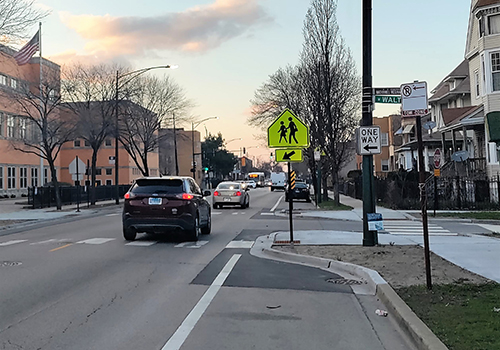
North Central Avenue
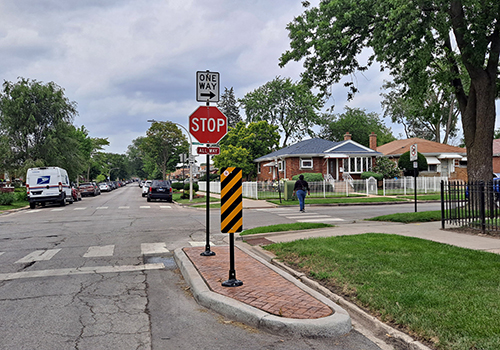
North Lavergne Avenue
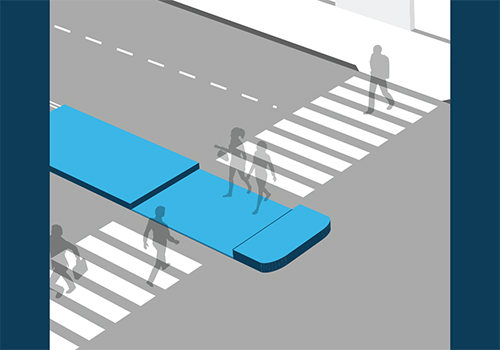
Typical Design

West Diversey Avenue
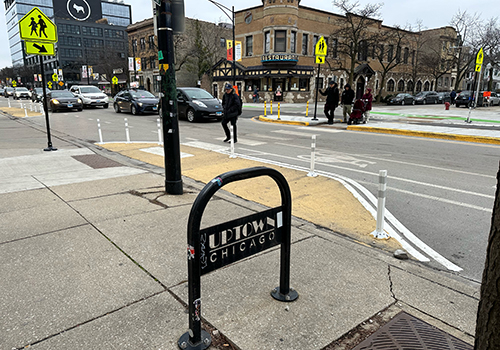
North Broadway Avenue

Typical Design

West Wilcox Street
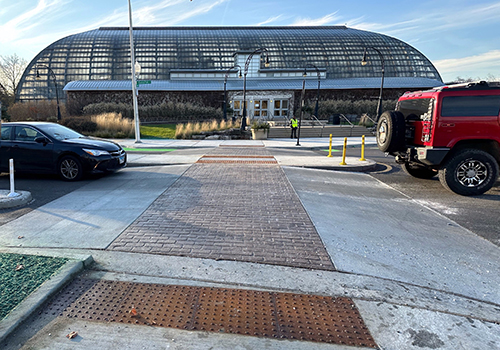
North Central Park Avenue
Bus Boarding Islands / Bus Bulbs
- Expand the sidewalk space at bus stops
- Improve boarding for passengers with easier transitions to and from the bus and sidewalk
- Help buses move faster by decreasing the time lost when merging into traffic after service stops
Learn more about bus boarding islands

Typical Design
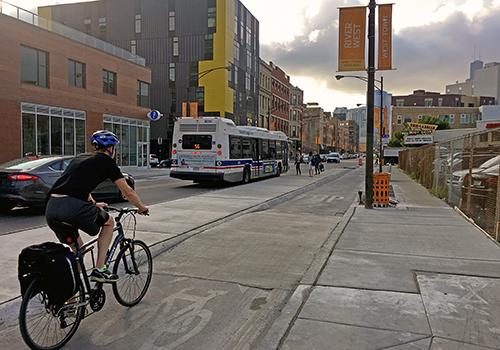
North Milwaukee Avenue
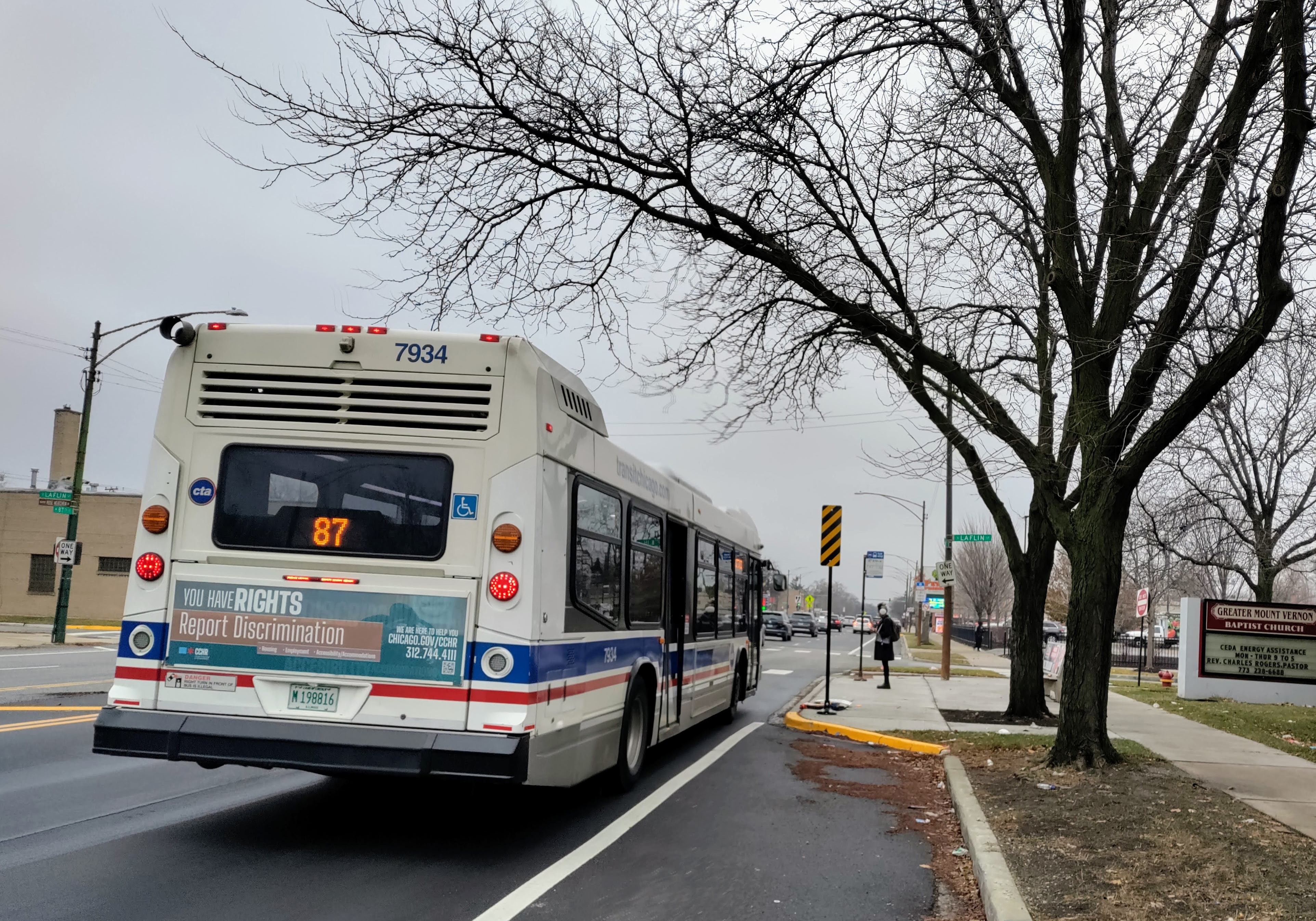
West 87th Street
Rapid Rectangular Flashing Beacons
- Activated when pedestrians push the button
- Notify drivers that a pedestrian is present and about to cross
- Can be installed at typical pedestrian crossings on streets without stop signs or traffic signals

Typical Design

West Devon Avenue
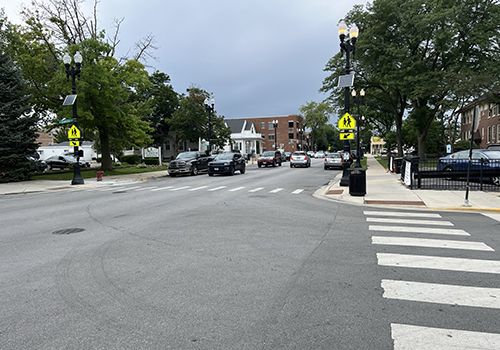
North Northwest Highway
Pedestrian Countdown Signals
- Provide a numeric countdown display for people walking
- Let pedestrians know how many seconds they have to finish crossing the intersection
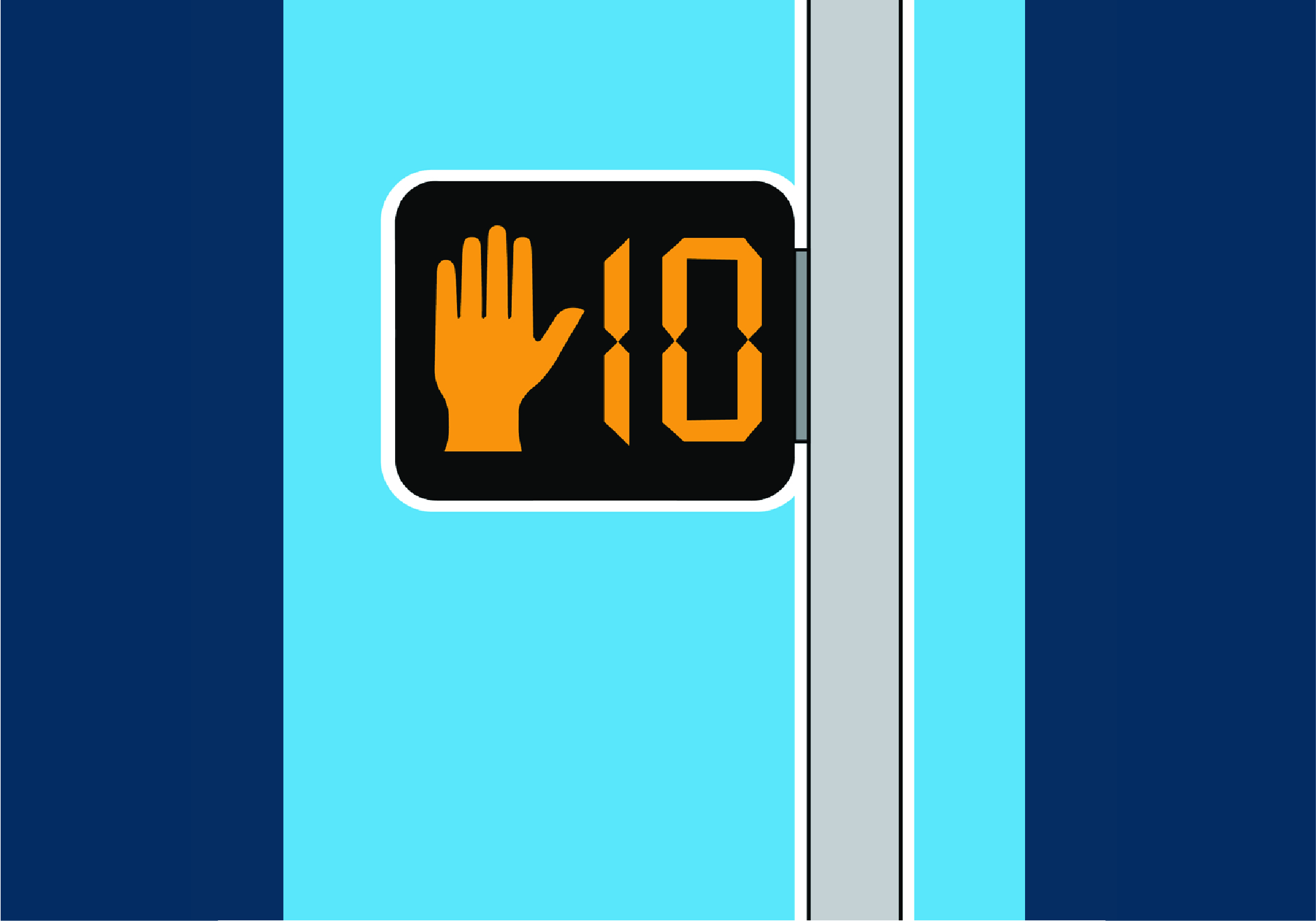
Typical Design
Leading Pedestrian Intervals
- Give pedestrians a head start when entering an intersection
- Enhance the visibility of people crossing an intersection
- Reinforce that people walking have the priority in the street over turning vehicles

Typical Design
Chicanes
- Consist of raised concrete curves extending out into the street from the curb
- Require drivers to increase their attention and slow down to navigate the street
- Can be activated with amenities like benches, bike racks, or landscaping
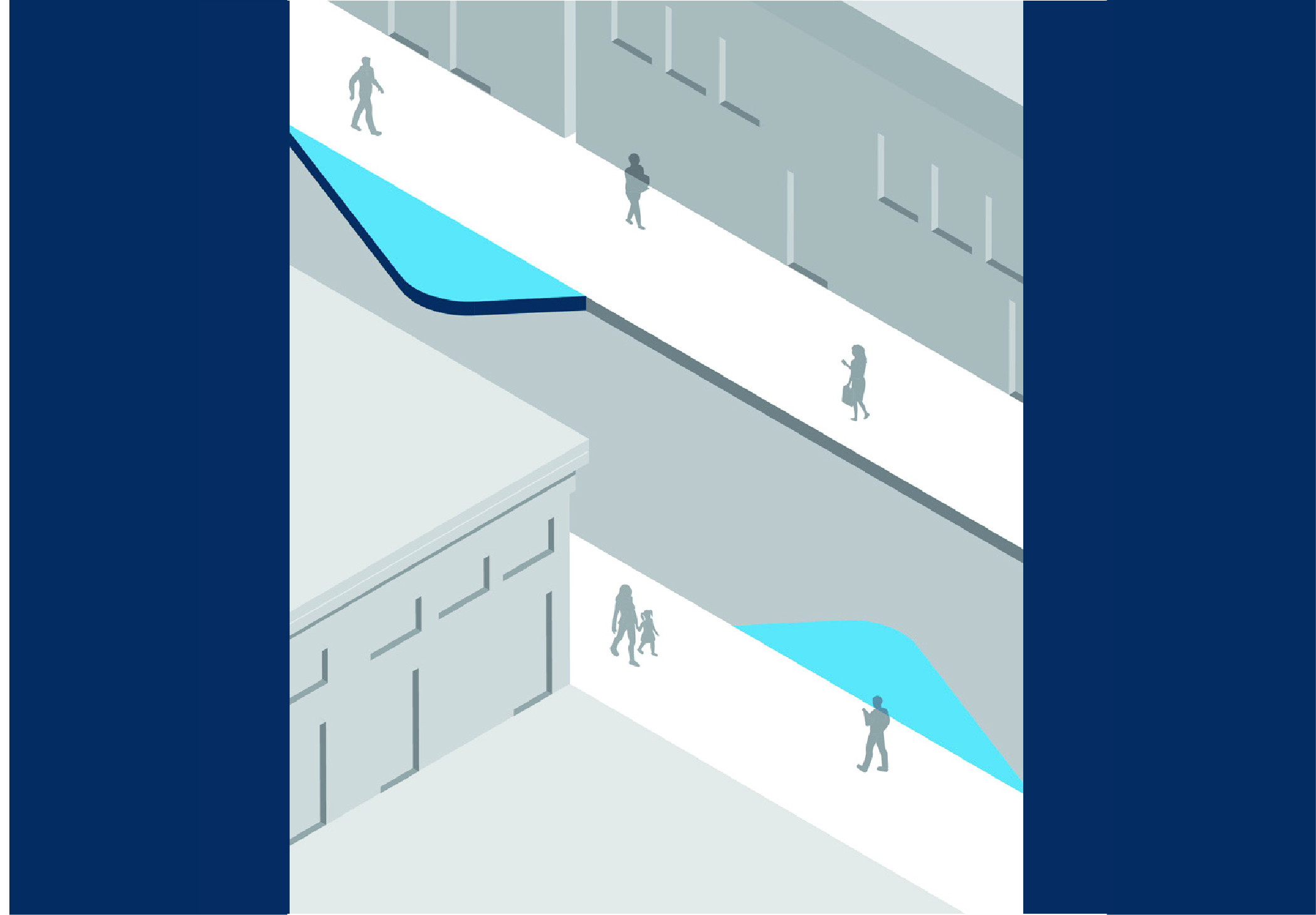
Typical Design

North Albany Avenue

South Racine Avenue
Left Turn Traffic Calming
- “Hardens” the centerline at intersections with raised curbs, bollards, and rubber speed bumps
- Encourages drivers to take a safer turning path, turn more slowly, and yield to people walking
- Emphasizes crossing locations and the presence of pedestrians

Typical Design
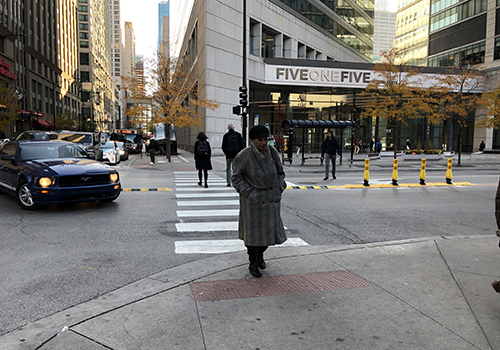
North State Street

West Division Street
Neighborhood Traffic Circles
- Consist of raised concrete circles with signage at the center of residential intersections
- Require drivers to increase their attention and slow down to navigate the intersection
- Effective at residential intersections with or without stop signs
- Can be activated with landscaping

North Drake Street
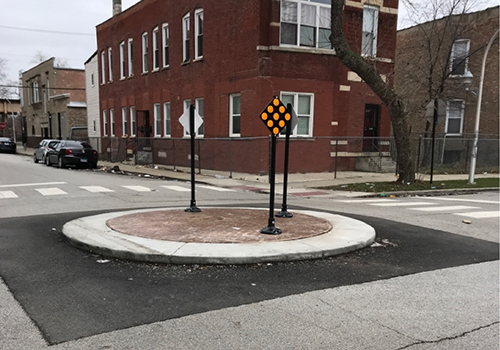
South St Louis Avenue

